Kannada is a language that boasts a mind-bending scientific and linguistic heritage. In this exploration, we delve into the fascinating history and intricate systems behind Kannada, revealing how art and science beautifully complement each other. Our journey will take us through ancient cryptography, the unique Akshara Sankhya Paddhati, and the remarkable work of Kumudendu Muni in the Siribhuvalaya.
Table of Contents
- Hampi: A Testament to Historical Grandeur
- Understanding Cryptography in Ancient India
- The Purpose of the Katapayadi System
- Siribhuvalaya: A Unique Literary Artifact
- Decoding Siribhuvalaya: A Mathematical and Linguistic Approach
- Technical Aspects of Kannada Language
- Conclusion: Rediscovering the Heritage of Kannada
- FAQ
Hampi: A Testament to Historical Grandeur
Just like the Colosseum of the ancient Roman Empire and the Acropolis of the ancient Greek civilization, Hampi stands as one of the finest relics of Bharat’s past. Located in Karnataka, it serves as an open-air museum showcasing the remnants of the once-grand Vijayanagara Empire. This historical site, now a crumbled marvel, is a spectacle for all who visit. The ancient ruins of Hampi, along with the Hoysaleswara Temple, merely scratch the surface of Karnataka’s rich history and the great language of Kannada.
Understanding Cryptography in Ancient India
To set the context for our exploration, we must first understand how cryptography was utilized in ancient India. Cryptography may sound like technical jargon, but at its core, it is akin to a secret language. It allows individuals to encode messages so that only those who possess the key can decipher them. However, in ancient Bharat, cryptography served a different purpose—it was primarily used to aid in memorization rather than to conceal information.
For instance, cryptography was employed to recall vast astronomical numbers and the rhythmic patterns of Sanskrit verses. This practice is not merely a modern invention; it has roots deeply embedded in the history of Bharat. I previously produced a detailed documentary on cryptography in ancient India, which is essential for those interested in this captivating topic. From that documentary, we can glean insights necessary for understanding the ancient signs of Kannada.
The Akshara Sankhya Paddhati
To grasp the concepts we will discuss, we need to familiarize ourselves with the Akshara Sankhya Paddhati, or the Alpha Syllabic Number System. This system establishes a mapping between Aksharas (letters) and Sankhyas (numbers). Essentially, it allows for a one-to-one correspondence between the letters of the language and numerical values.
For example, a simple word like “Amma” can be transposed into numbers using a specific lookup table, resulting in the value “365.” This Akshara Sankhya Paddhati was invented by Aryabhata approximately fifteen hundred years ago and is known as the Katapayadi system. The beauty of this system lies in its simplicity and effectiveness.
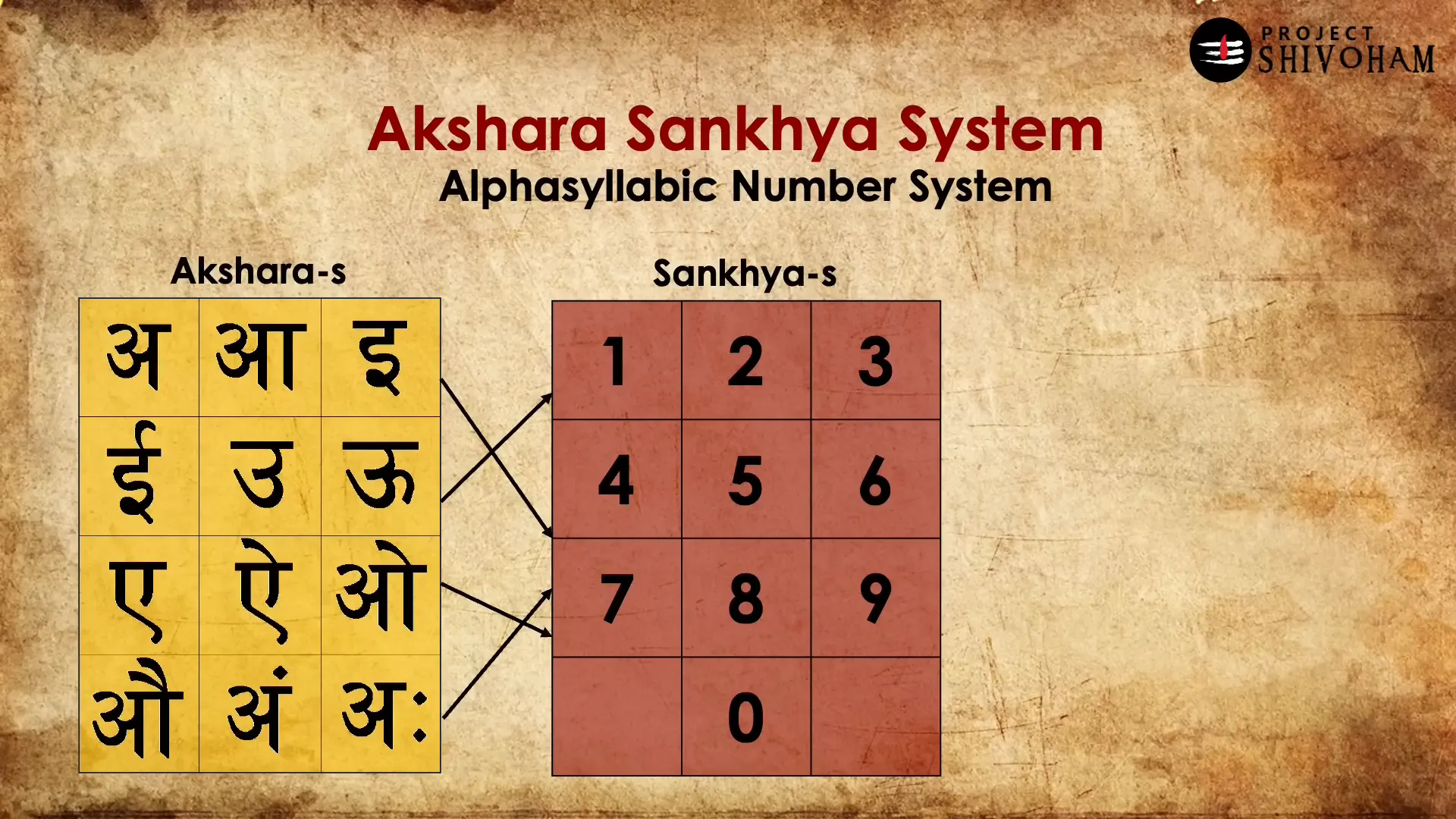
How the System Works
In human speech, vowels play a crucial role. Aryabhata assigned values to vowels based on powers of ten, which enables easy recall. For instance, the positions of vowels correspond to 10^0, 10^1, 10^2, and so forth. Consonants were also assigned numerical values, organized into groups. For example, guttural consonants like “k,” “g,” and others correspond to numbers 1 through 5, while palatal consonants are assigned values from 6 to 0.
Let’s take the number “Thirty Thousand Six Hundred” as an example. This can be expressed in the Akshara Sankhya system as follows:
- Thirty thousand = 3 times 10,000 (represented by “u”)
- Six hundred = 6 times 100 (represented by “e”)
Using the lookup table, we can further break this down, with “3” becoming “Ga” and “6” becoming “Cha.” Thus, “Thirty Thousand Six Hundred” translates to “Gucci” in this system.
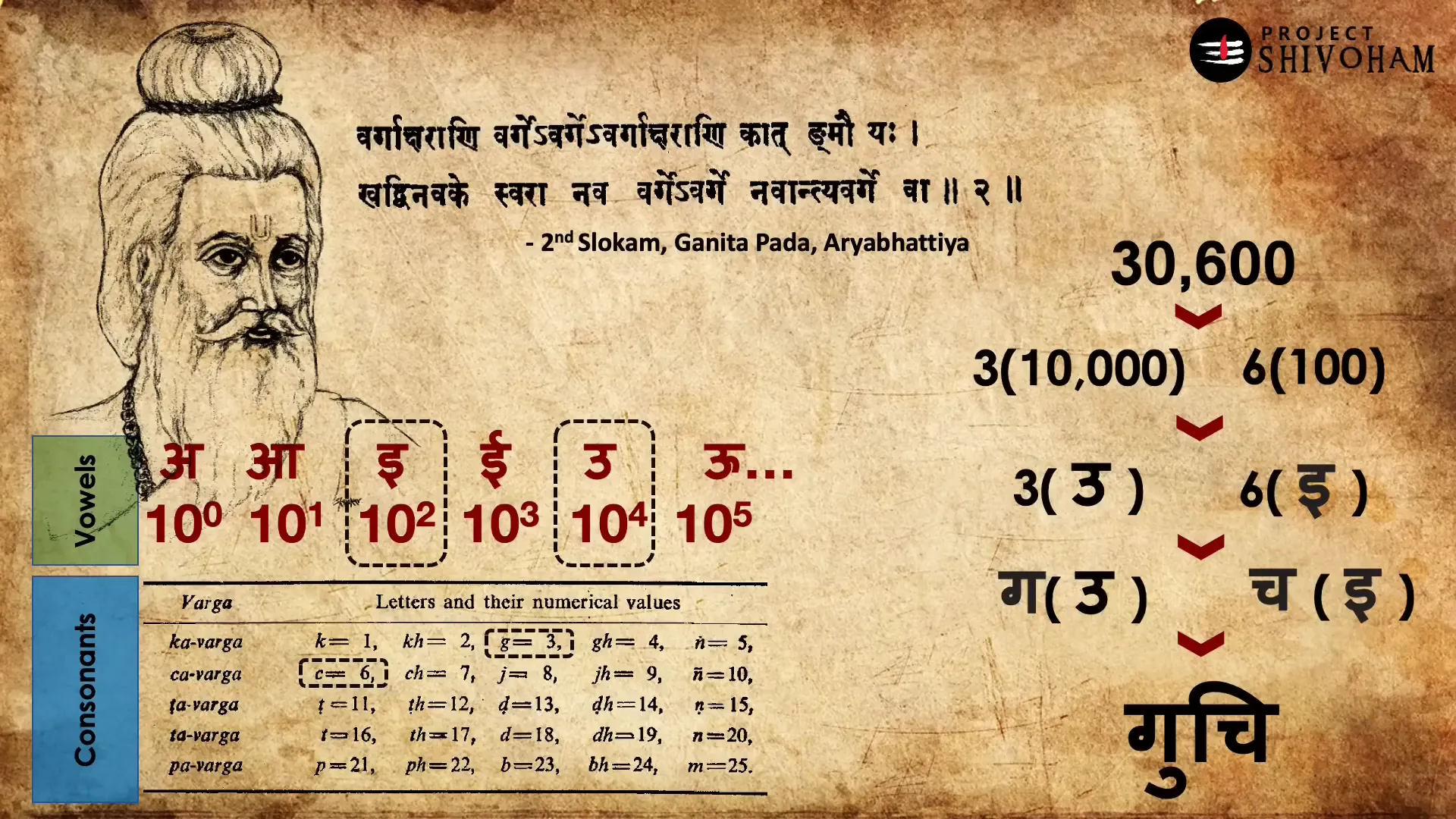
The Purpose of the Katapayadi System
The primary aim of the Katapayadi system is twofold: data compression and ease of memorization. Aryabhata, who is credited with providing precise values of the sine wave, devised this system to represent vast quantities of information in a compact form. In ancient Bharat, the tradition of recording knowledge relied heavily on language. Even numbers were written in letters, necessitating a system that could efficiently convey complex values.
Through the use of the Akshara Sankhya Paddhati, individuals could memorize intricate mathematical concepts, such as the sine wave values, simply by recalling slokas. This method exemplifies the ingenuity of ancient Indian mathematicians, whose contributions have often been overshadowed by colonization.
Siribhuvalaya: A Unique Literary Artifact
Fast forward to around twelve hundred years ago, a Jain monk named Kumudendu authored a remarkable book called Siribhuvalaya. This book is unique in that it is written entirely in numbers, specifically Kannada numerals. It is also noteworthy for its ability to be read in multiple languages, making it a linguistic marvel.
The concept may initially seem perplexing. How can a book composed solely of numbers convey meaning? Furthermore, how can it be read in various languages? The answer lies in the intricate design of the Siribhuvalaya.
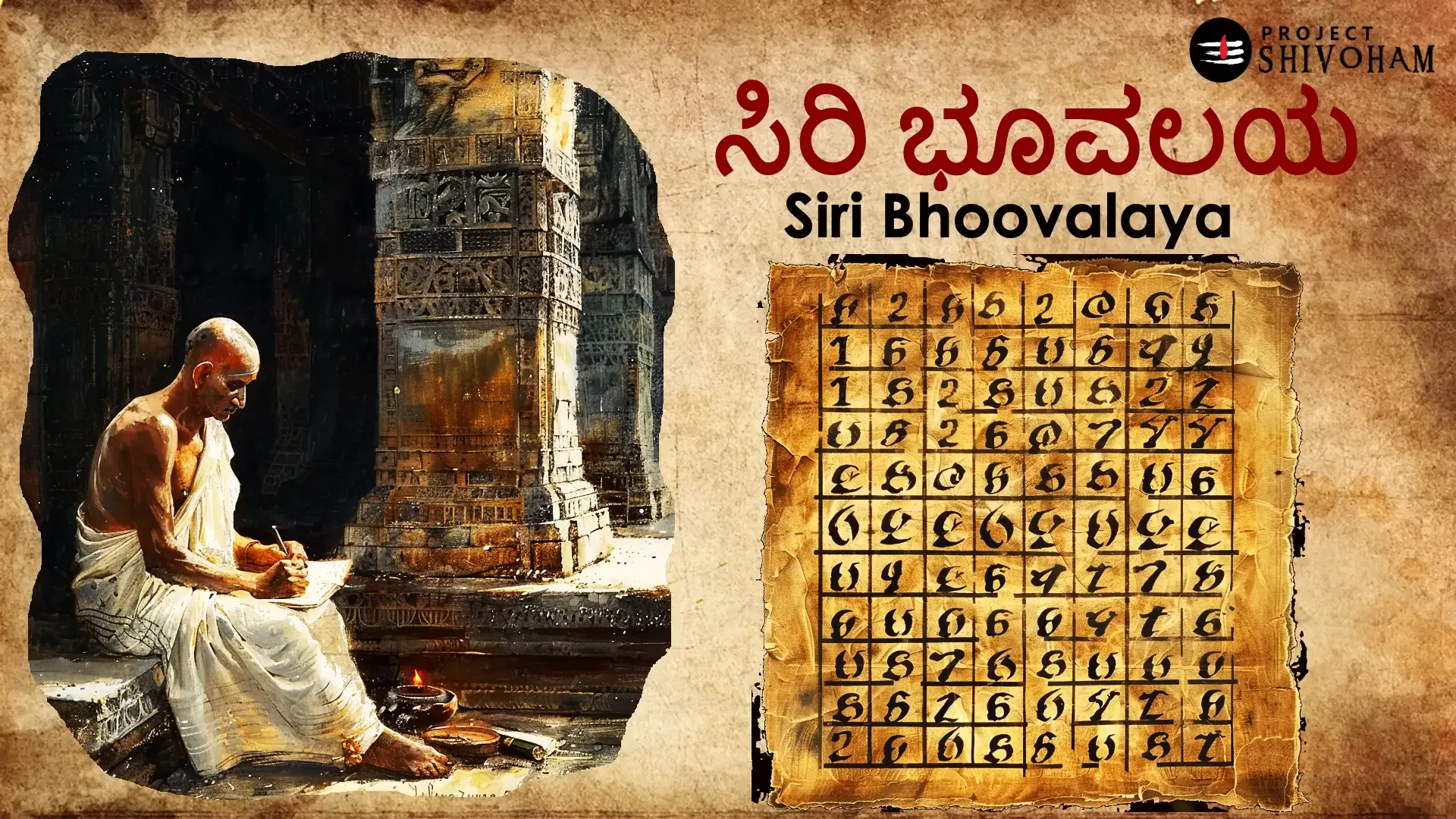
The Structure of Siribhuvalaya
Siribhuvalaya consists of three key components:
- A grid of random Kannada numerals arranged in a 27×27 matrix.
- The complete Kannada alphabet positioned in the center.
- An invisible third part, which contains the brilliance of Kumudendu’s design.
To decode this book, one must transpose the numbers with the Kannada alphabet using predefined paths created by Kumudendu. For instance, if one follows a specific path (let’s call it Path A), they will arrive at a sequence of numbers that can be translated into a Kannada slokam.
The Complexity of Siribhuvalaya
The complexity of Siribhuvalaya is further amplified by its multilingual capabilities. The paths through the grids can yield different phonetic values depending on the sequence followed. For example, a path resembling a falcon may yield a Kannada slokam, while a path shaped like a tortoise might produce a Tamil slokam.
This innovative approach to encoding literary meanings into numbers exemplifies the advanced understanding of linguistics and mathematics possessed by ancient scholars. The combination of visual paths (Chitrakavya) with numerical values creates a multi-layered reading experience that challenges conventional understanding of literature.
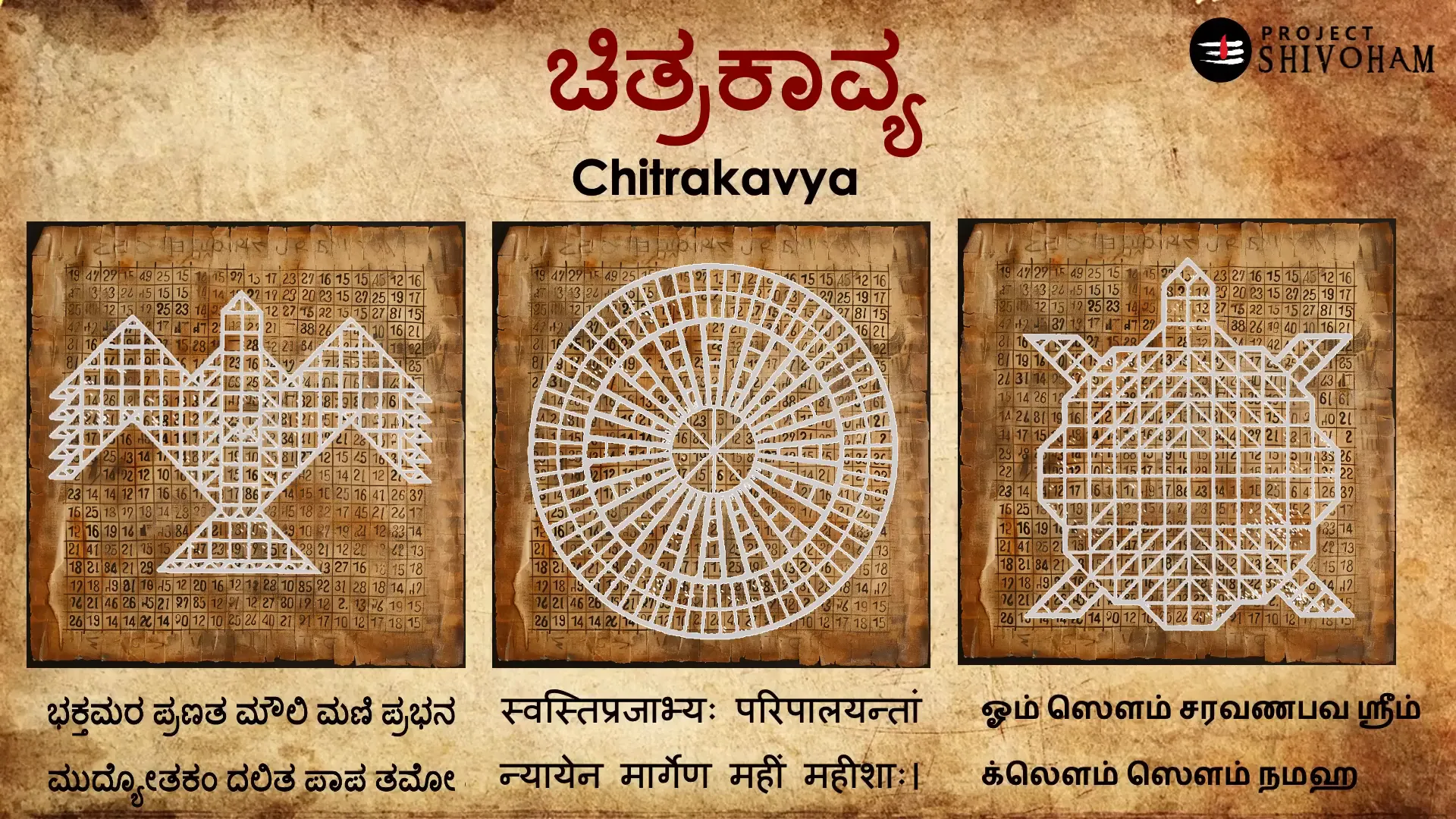
Decoding Siribhuvalaya: A Mathematical and Linguistic Approach
To fully grasp the intricacies of Siribhuvalaya, one must appreciate its mathematical encoding system. The 27×27 matrix, known as a chakra, requires advanced mathematics for both encoding and decoding. This book is a testament to the sophisticated interplay between mathematics and language.
Deciphering Siribhuvalaya involves recognizing patterns within the numerical grid, paralleling modern algorithmic analysis techniques. Furthermore, the book employs principles of cryptography in a step-by-step manner to decode the messages encoded within the chakras.
Multilinguistic Mapping
Siribhuvalaya is one of the earliest texts to feature multilinguistic mapping from a single source. It offers a glimpse into comparative linguistics, allowing readers to explore the relationships between different languages. This innovative approach is particularly relevant in today’s context, where discussions about language supremacy often dominate the discourse.
Within Siribhuvalaya, the Kannada script serves as a vehicle for conveying phonetic values that, when combined with various visual paths, can yield slokams in multiple languages. This complexity showcases the depth of knowledge held by ancient scholars, challenging contemporary perceptions of linguistic evolution.
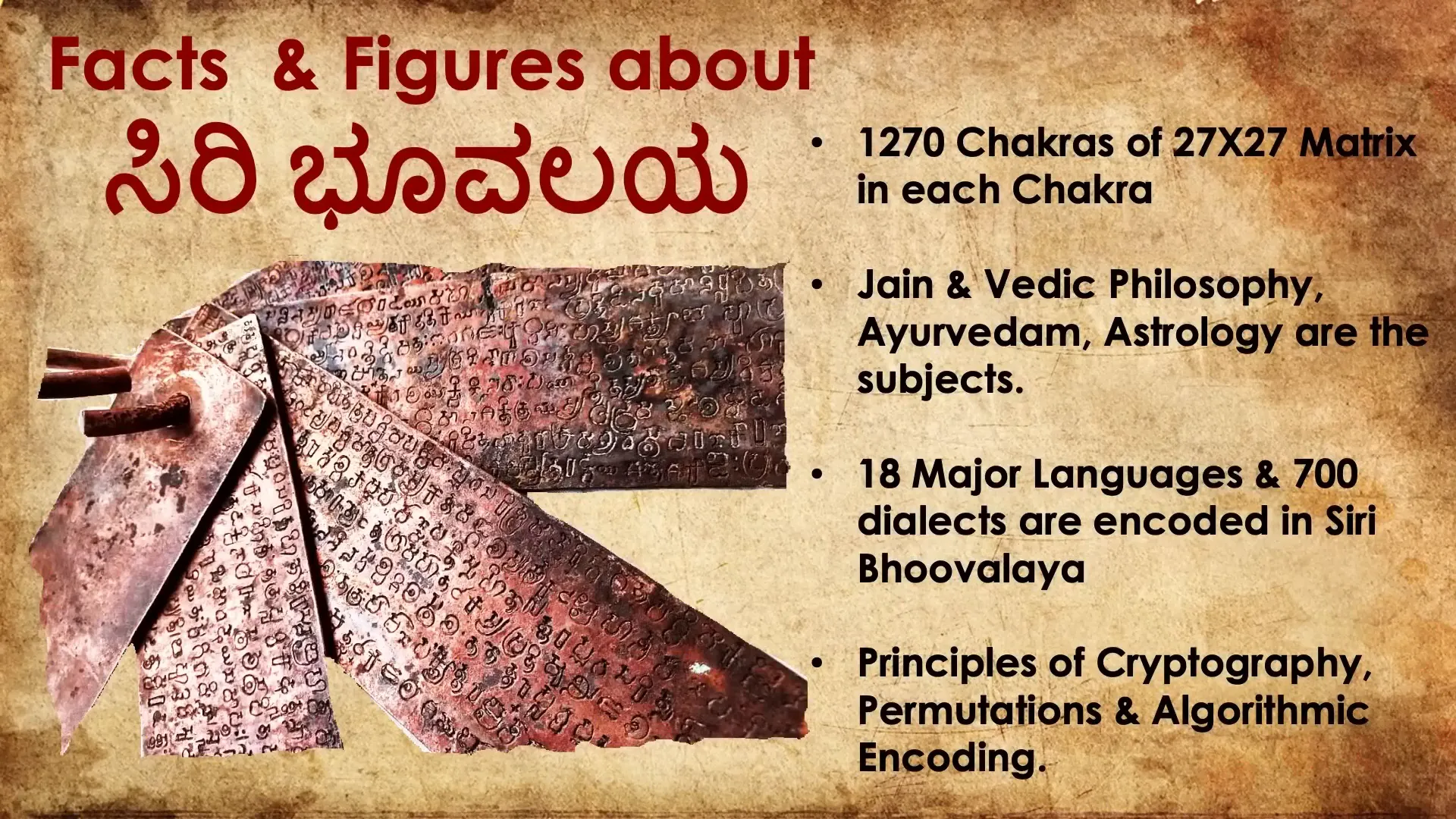
Technical Aspects of Kannada Language
Beyond the fascinating features of Siribhuvalaya, the Kannada language itself possesses several technical traits that underscore its scientific nature. Here are five key aspects:
- Algorithmic Nature: Kannada showcases a structured approach to language, evident in works like Siribhuvalaya.
- Generative Grammar: The language allows for the fusion of words and creation of new rules, showcasing its generative capacity.
- Alphanumeric System: Kannada tradition permits writing numbers as letters and vice versa.
- Mental Framework: The language encourages memorization of rhythmic patterns, facilitating poetic expression.
- Aphoristic Nature: Kannada can convey profound meanings in concise forms, akin to sutras.
These technical traits illustrate the scientific foundation of Kannada, which has thrived despite historical challenges such as invasions and colonization. In a contemporary world where the essence of language is often debated, it is essential to recognize the rich heritage embedded in Kannada.
Conclusion: Rediscovering the Heritage of Kannada
The legacy of Kannada is not merely confined to its linguistic beauty; it extends to a profound understanding of mathematics, literature, and philosophy. As we navigate the complexities of modernity, it becomes increasingly important to rediscover and celebrate the heritage of Bharat. This exploration of Kannada through the lens of cryptography and its intricate systems exemplifies the interconnectedness of art and science.
In an age where artificial intelligence and technology dominate discourse, let us not forget the wisdom of our ancestors. The Akshara Sankhya Paddhati and Siribhuvalaya serve as reminders of the remarkable intellect that has shaped our cultural landscape. As the youth of today seeks to reclaim their heritage, it is our responsibility to support and encourage this journey of rediscovery.
Namaskara, and thank you for joining me in this exploration of the ancient science of Kannada.
FAQ
What is the Akshara Sankhya Paddhati?
The Akshara Sankhya Paddhati is an Alpha Syllabic Number System that maps letters (Aksharas) to numbers (Sankhyas) for easy memorization and data compression.
Who invented the Akshara Sankhya Paddhati?
Aryabhata, an ancient Indian mathematician, invented the Akshara Sankhya Paddhati around fifteen hundred years ago.
What is Siribhuvalaya?
Siribhuvalaya is a unique book authored by Jain monk Kumudendu, written entirely in Kannada numerals and capable of being read in multiple languages.
How does Siribhuvalaya encode literary meanings?
Siribhuvalaya uses a grid of numbers and predefined paths to encode literary meanings, allowing readers to transpose numbers into Kannada and other languages.
What are the technical traits of Kannada?
Some technical traits of Kannada include its algorithmic nature, generative grammar, alphanumeric system, mental framework for memorization, and aphoristic nature.
This article was created from the video The Ancient Science of KANNADA with the help of AI. Thanks to Aravind Markandeya, Project Shivoham.